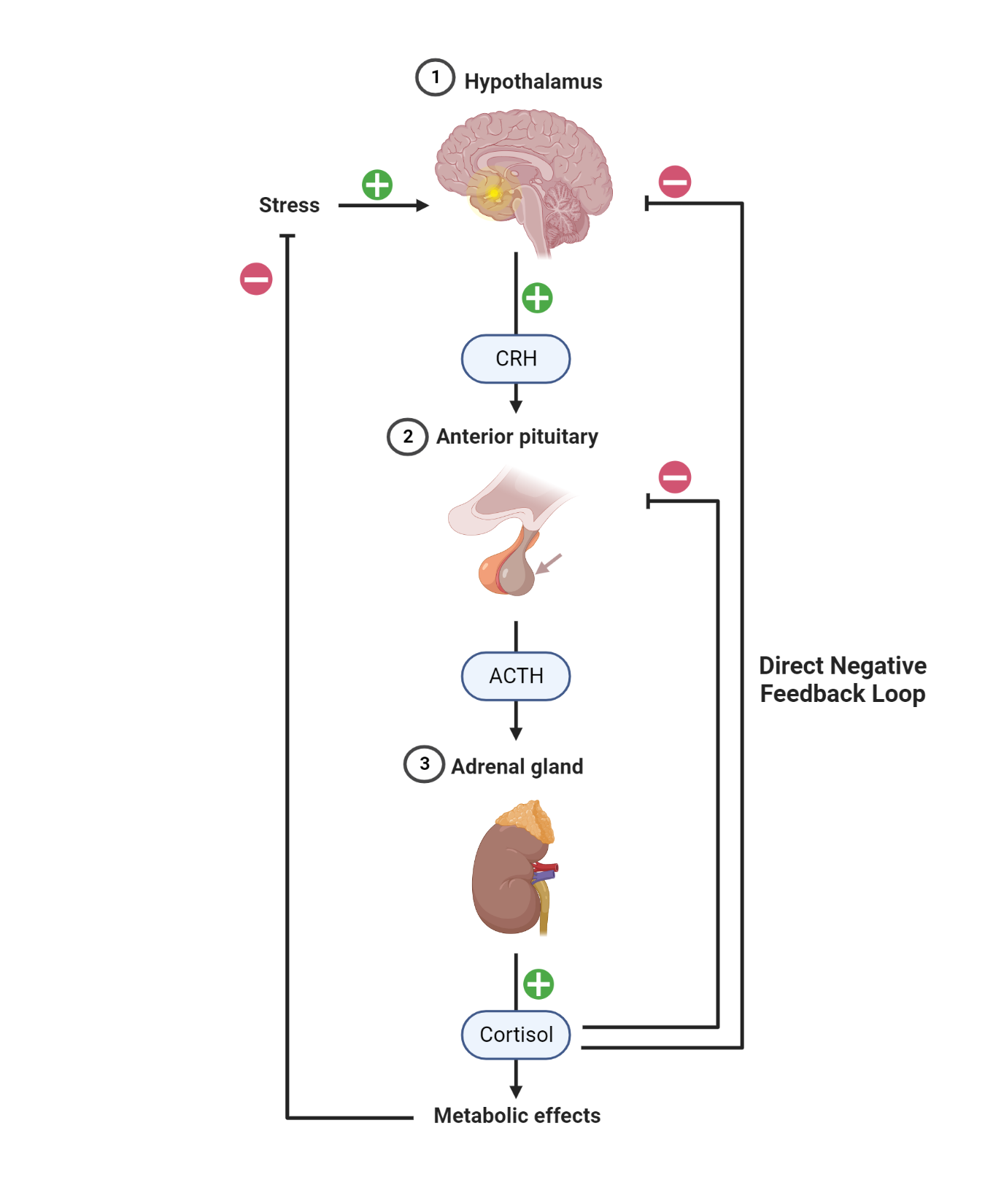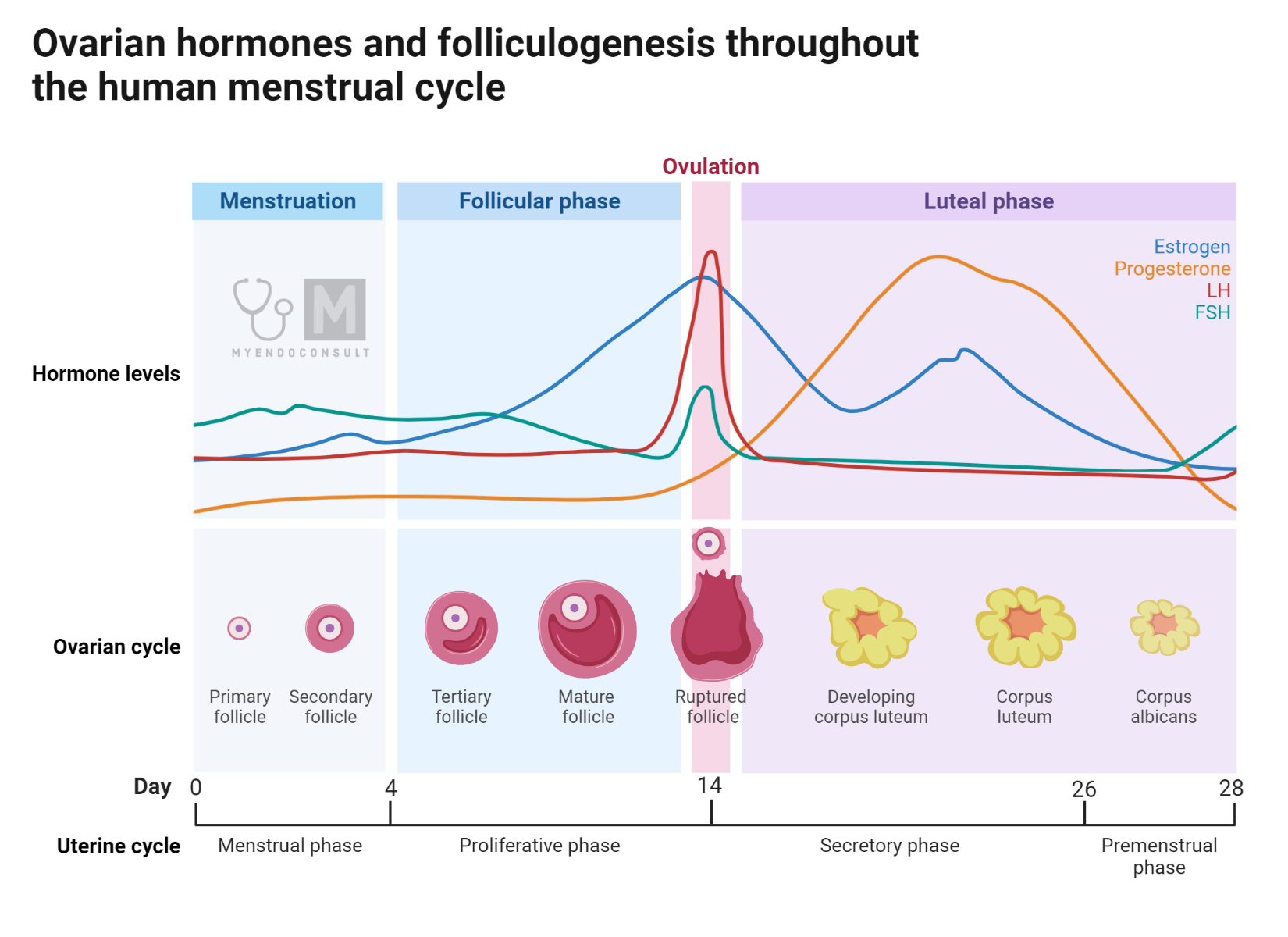A hallmark of endocrine systems is the feedback regulation mechanism that modulates hormone synthesis. This feedback control relies chiefly on two key factors: the stimulus from superior neural nodes and variations in plasma levels of either hormones or other substances.
These control networks permit the regulation of hormonal levels and consequent actions within a specified range under basal conditions. They are instrumental in establishing circadian rhythms for hormonal discharge and also in the modulation of hormone secretion in reaction to diverse sensory inputs.

Significance of Endocrine Feedback Loops
Uncontrolled actions of released hormones can lead to prolonged effects that might become detrimental to the organism. Many pathological conditions are resultant of dysfunctional control systems, exemplified by tumors, which are abnormal and unregulated cellular proliferations typically driven by genetic aberrations.
Consequently, control mechanisms are crucial for regulating endocrine functions and upholding homeostasis. When the integrated signal to an endocrine cell denotes that an increased amount of a certain hormone is required by the body, the secretion of that hormone is augmented, and perhaps its synthesis is sustained for future demand. This surge in hormone production and release persists until its intended effect is achieved and the demand for increased production subsides, as evidenced by a decrease in the strength of the stimulus. Thereupon, the endocrine cell reverts to its basal activity level. This regulatory mechanism, essential for maintaining the body’s physiological equilibrium, is known as negative feedback.
Types of Feedback Loops
The hypothalamic-pituitary-target gland axis serves as a representative model for feedback regulation. In this paradigm, the target gland can be the thyroid, adrenal, or gonads. Stimuli from superior neural centers instigate the hypothalamus to secrete a releasing factor, which then prompts the pituitary gland to release a tropic hormone. Subsequently, this tropic hormone incites the synthesis and discharge of hormones from the target gland. The subsequent increase in circulating hormone levels acts to repress further production of the hypothalamic-releasing factor and/or the tropic hormone. Other elements that impart feedback regulation on hormone production encompass ions, such as the influence of calcium on parathyroid hormone secretion, metabolites like glucose on insulin and glucagon secretions, and osmolarity and fluid volume on vasopressin, renin, and aldosterone release.
Although most instances of feedback regulation are inhibitory, positive feedback loops are also observed. For instance, oxytocin secretion is amplified by uterine contractions, which in turn promote further contractions, demonstrating a positive feedback mechanism.
Positive feedback loops are not uncommon in endocrine regulation. A prime example of this occurs during childbirth, where oxytocin release, stimulated by uterine contractions, subsequently reinforces these contractions. This feedback loop culminates in the successful delivery of the neonate.
Throughout the menstrual cycle, the release of gonadotropins is subjected to both positive and negative control mechanisms. In general, estradiol typically exerts an inhibitory effect on the secretion of gonadotropins. However, during the late follicular phase of the menstrual cycle, when estradiol concentrations escalate and cross a specific threshold, this triggers a surge in luteinizing hormone (LH) and follicle-stimulating hormone (FSH). This surge ultimately induces ovulation, demonstrating the complexity of hormonal interactions and control within the reproductive cycle.
Negative Feedback Loop
A prevalent form of feedback regulation in endocrine cells is direct feedback, where the endocrine cell and the function it controls are intimately linked. A prototypical instance of such direct negative feedback can be found in the regulation of insulin and one of its primary functions, controlling blood glucose concentration.
When the internal environment is disrupted in a specific way, this perturbation serves as a stimulus that prompts an endocrine cell to release its hormone into the systemic circulation. The hormone is transported to its target tissues, where it elicits a physiological response aimed at mitigating the stimulus and restoring the body’s internal environment to its original undisturbed state.
Let’s consider the β-cells of the pancreatic islets of Langerhans, an endocrine gland. If blood glucose concentration elevates (for instance, post-prandial), this disturbs the internal environment, and the heightened blood glucose concentration acts as a potent stimulus on the β-cells, prompting them to release insulin. Insulin is subsequently circulated to its target cells (such as muscle cells), where it encourages glucose uptake. Consequently, the stimulus on the β-cells is diminished, insulin release is curtailed, and the internal environment is returned to its initial undisturbed state. Hence, the response to the hormone exerts a direct negative feedback on the site of the hormone’s production – the β-cell.

Intriguingly, some endocrine glands, when stimulated, exert their influence on target cells that might also be endocrine cells. For example, corticotrophin (CRH) is synthesized by the anterior pituitary, which acts on the adrenal cortex to produce cortisol. Cortisol then exerts direct negative feedback on the anterior pituitary’s production of corticotrophin, also known as ACTH.
Negative Feedback Loop: Indirect Interactions
The human endocrine system displays considerable complexity in its regulatory mechanisms, especially with regards to the anterior pituitary gland’s involvement in negative feedback processes. While the anterior pituitary directly participates in negative feedback loops with other endocrine glands, such as the adrenal cortex, it is also engaged in indirect feedback loops mediated by the central nervous system (CNS).
This unique interaction is primarily attributed to the hypothalamus, a key region within the brain that can influence the anterior pituitary. Beyond its well-known neural functions, the hypothalamus possesses endocrine functionality, which becomes evident when we examine the hypothalamus-pituitary axis closely. Hypothalamic nuclei, composed of specific groups of neurons, extend their axons towards the pituitary gland. Neurosecretions from these neurons are released into a distinct vascular network, which connects the hypothalamus region to the anterior lobe of the pituitary, thereby establishing the hypothalamus as an integral part of the endocrine system.
An example of this intricate feedback process can be seen in the cortisol production pathway. Here, the adrenal cortex and the anterior pituitary participate in a direct negative feedback loop. Simultaneously, there’s an indirect negative feedback loop involving the hypothalamus influencing the production of corticotrophin-releasing hormone (CRH). Thus, the feedback mechanisms operate on multiple levels, providing a comprehensive regulatory framework.
Other notable instances of direct and indirect negative feedback routes include the regulation of iodothyronines from the thyroid and the gonadal steroids from the testes or ovaries in males and females, respectively. In these scenarios, the indirect negative feedback forms a connection between the peripheral endocrine gland and the hypothalamus, showcasing the multi-tiered regulation within the endocrine system.
Negative Feedback Loop: Short or Autoregulatory Feedback
In the study of endocrine system regulation, specifically the hypothalamo-pituitary axis, we observe that the production of anterior pituitary hormones is partially motivated by distinct hypothalamic hormones. Given this system design, it’s plausible that the anterior pituitary hormones could affect their own production through feedback loops aimed at the hypothalamic level. Indeed, ample evidence supports this type of feedback regulation, known as short or autoregulatory negative feedback.

An illustration of this process can be seen in cortisol regulation. Here, the hypothalamus experiences indirect negative feedback from circulating cortisol and a short, autoregulatory negative feedback from corticotrophin. Concurrently, the anterior pituitary is subjected to a direct negative feedback from cortisol. This description, however, only skims the surface of the complexity inherent in the hypothalamo-pituitary-adrenal axis, with numerous other hormones and factors also exerting regulatory influences on it.
The key takeaway is that control over any endocrine system is multifactorial and can occur at several different levels. This layered and interconnected regulation allows for a highly sensitive, specific, and precise degree of control over these crucial physiological regulatory systems.
Positive Feedback Loop in Endocrine Glands
The concept of positive feedback loops might initially appear paradoxical, given their potential to disrupt equilibrium within physiological systems. Nevertheless, their existence in natural systems should not be entirely surprising. Under general circumstances, uncontrolled positive feedback would indeed precipitate chaos and dysfunction due to the lack of control over the physiological system. However, under specific conditions dictated by diverse signals influencing the system, positive feedback loops can form transiently. Once these conditions are modified, the system cannot sustain the positive feedback, resulting in a return to the initial equilibrium.
Several instances of positive feedback mechanisms have been observed in nature, including mammalian physiology, where they occur between distinct cellular entities or even within individual cells. Crucially, under normal circumstances, these mechanisms are self-limiting—the induced environmental change eventually nullifies the conditions that facilitated the development of the positive feedback, leading to the termination of the effect.

One of the most salient examples of positive feedback in endocrinology is manifested during the female menstrual cycle. This process involves an intricate interaction between the steroid hormone estradiol (specifically, 17β-estradiol) secreted from the ovaries, and the hypothalamo-pituitary axis, which plays an instrumental role in regulating ovulation—the release of a mature ovum. This example underscores the fact that, while inherently disruptive, positive feedback can be integral to certain biological processes under well-defined conditions.

